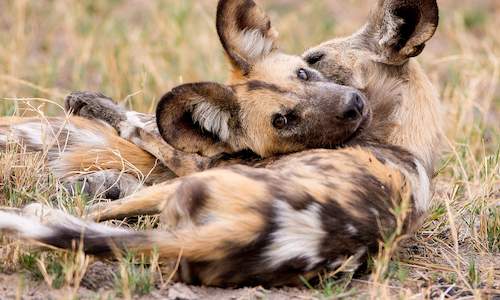
Development and Conservation
More than eighty percent of the landmass of Botswana is carpeted by the sands of the Kalahari Desert making the country inhospitable at first site. This is one of the main reasons the country was never colonised during the scramble for Africa. Despite the seeming desolation Botswana is a wildlife haven.Beef and a Great Migration
In the early 1970's the European Union stipulated that Botswana had to control the movement of wildlife into its beef herds in order to control diseases such as foot and mouth disease from infecting the cattle. As beef was the country's largest export at the time the government of Botswana embarked on a policy of erecting fences in strategic places across the country.Most of these fences were erected without a feasibility study being carried out with the result that the migration routes of a number of species have been cut off and tens of thousands of animals have died in the past two decades from the denial of a route to water and new grazing.A Wildebeest migration second in size to the great migration of east Africa happened between the central regions of the Botswana and the waterways of the north. During times of drought more than half a million animals would head north to the Okavango and Savuti. One of the first fences to be erected was the Khuke Fence on the northern boundary of the Central Kalahari Game Reserve. What this fence did was to stop this huge migration of Wildebeest - with the result that the Wildebeest population in Botswana has dropped more than 90 percent.The End of the Okavango?
Possibly the best known fence is the 'Buffalo Fence' that separates Maun from the Okavango Delta. It literally stretches across the breadth of the country. There was a huge outcry when the fence was erected but it has since been acknowledged by many that the fence may have saved the Okavango Delta.At about the same time as the erection of the fence the Botswana government had embarked on a project to wipe out the Tsetse fly from the delta. The Tsetse fly was the very reason that cattle had not moved into the prime grazing lands of the Okavango floodplains. Sleeping sickness and Nagana were prevalent in Botswana at the time and with the Tsetse fly gone it would be a free for all for cattle in the delta. The fence stopped that before it could happen.Wildlife, Cattle and Livelihoods
The major part of Botswana's foreign earnings today come from diamonds and tourism and it is this point that has become the call for environmentalists to the Botswana government for the cessation in the erection of fences - a call that has largely being unheeded. It is not that the government has become deaf to the calls - the issue today is that subsistence farmers are having issues with wildlife destroying their livelihoods. Elephants trample their meagre crops and Lions kill the livestock. Fences today are erected to keep the peace.An example of the former is the Makgadikgadi / Boteti fence - one of the most recent to be erected. The issue at hand is that the Boteti River, once a major overflow of the Okavango Delta began to dry up in the early 1990's. Waterholes were sunk in the dry channel to provide for the wildlife and cattle alike.The Boteti was a natural barrier between the wilderness of Makgadikgadi and the cattle farmers on the opposite bank but with the drying up water was at a premium with the herds of zebra and wildebeest competing with cattle for the diminishing resources.
A fence was considered the only option but with that decision a debate arose over the sighting of the fence. Finally it was decide to zigzag the fence in the channel so as to provide some waterholes for wildlife and others for the cattle. The issue rages on! Everyone has an opinion on the veterinary fences and few will seek to see all sides of the debate.
By Leigh Kemp
 Sustainable tourism in Botswana is managed by keeping tourism numbers low in order to reduce the environmental impact that could spiral out ...
Sustainable tourism in Botswana is managed by keeping tourism numbers low in order to reduce the environmental impact that could spiral out ...